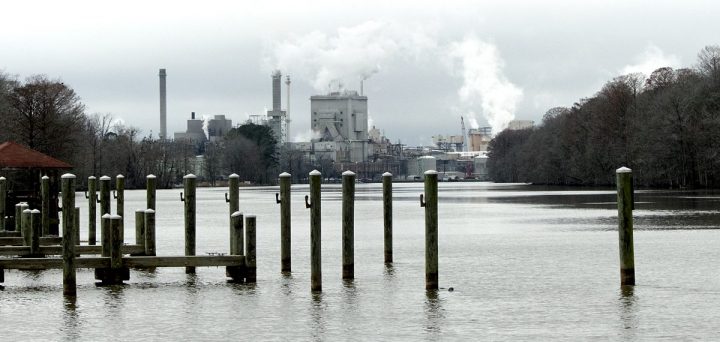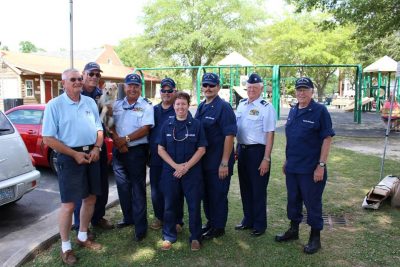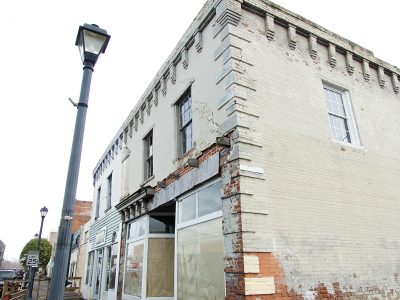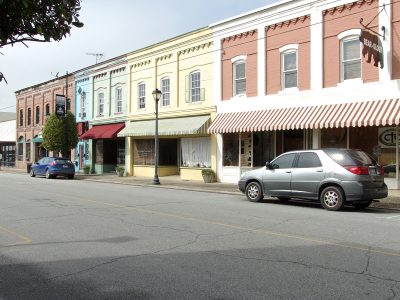
PLYMOUTH – Some here say this Washington County town is making a comeback. It’s had to do that a number of times since its founding in 1787, but this one may demand the biggest change in how people think of it.
At one time, Plymouth was a thriving small city. Right after World War II, Plymouth saw its most profound growth. That was when the wood and paper mills here were growing. That was when Coast Guard Auxiliary Flotilla 16-2 came into existence, in 1948, as the first flotilla in the state and now one of the oldest in the nation.
Supporter Spotlight
The town’s peak population reached almost 4,800. That was in 1970 when the wood product and paper mills were operating around the clock and Weyerhaeuser Co. had one of its largest East Coast operations here. Wood and paper products are still produced here, and Weyerhaeuser operates a lumber yard but the paper mill was taken over by Domtar in the late 2000s and makes fluff pulp for filling diapers and feminine hygiene products, and employees now number in the low hundreds instead of the thousands.
As the mill jobs left, the population declined, and the latest estimates put the population of Plymouth at 3,500.

The Plymouth Flotilla, with its 60-year history of service and rescues, was nearly forced to disband as others have had to do for reasons that include declining and aging membership.
The auxiliary’s mission is to promote and improve recreational boating safety, provide trained crews and facilities to augment the Coast Guard and enhance safety and security of ports, waterways and coastal regions and otherwise support the Coast Guard. The Plymouth Flotilla meets on the first Thursday each month and the auxiliary here is coming back, at least that’s what Flotilla Cmdr. Jeff Russell will tell you.
“We’re going to put extra effort into getting the word out and just inviting people,” Russell said recently. “We’ll be at public events, boating classes. Those are our most lucrative places for new members.”
Supporter Spotlight
The flotilla, which last year received its 70th anniversary banner from the Coast Guard, has only 10 members, a “pretty challenging” situation, Russell said.
“We have one person we’re about to add to the flotilla and he holds a lot of promise,” he said. “We’re utilizing the help of other flotillas. Members are inviting someone to every meeting. So far things seem to be going pretty well.”
Once an Important Port
Situated on the Roanoke River, the town before the Civil War was one of the most important ports in the state, boasting a U.S. Customs house and a small shipyard.
There’s a good reason why Plymouth was once an important port.

“You will notice that Plymouth is on a hill,” Plymouth Mayor Brian Roth said, noting that the town is surrounded by miles of flat North Carolina coastal plain. What is not farmed is marsh, swamp or covered in maritime forest and pocosin.
“Coming up the river, it’s the first dry land. All the goods came down here in small boats. Then onto larger boats. Off the town dock it’s 18 feet deep. I’ve seen 75-foot tugs tied up there,” said Lou Manring, who until recently was commander and is still the vice flotilla commander.
Because of its importance as a port, Union forces seized the town in 1862. It was, according to Union soldier David Day a “… small but rather pretty town, situated on the south bank of the Roanoke River, about five miles up from the sound.”
That changed in 1864 when the Confederate Army, backed by the ironclad ship, Albemarle, drove the Union army from the town and captured the port in April of that year. It was a short-lived, Pyrrhic victory. The Union navy blockaded the mouth of the Roanoke River and by the following October, the Confederates were driven from town.
Heavily damaged, Plymouth had to rebuild. Then, in 1898, the downtown was consumed in a fire, and the town rebuilt again.

It’s different now, though. The buildings along Water Street seem little changed since Plymouth’s heyday. Most of the downtown is part of the Plymouth National Historic District.
Some buildings are dilapidated and in desperate need of repair, but others have been restored. Still others are undergoing work and there seems to be plans for almost every building in town.
The Roanoke River plays an important role in the revitalization.
Manring stepped down as flotilla commander because he and his wife, Jill, who is also a staff officer with the auxiliary, are deep into renovating the old B&W Grocery store on the town’s waterfront, turning it into a coffee shop with an area in the front for local artisans.
The view of the river from the building is spectacular. The Roanoke River is about 500 feet wide at this point. The town is on a low bluff, and across the river is marsh and dense forest.
“This river is beautiful,” Manring said. “There are 50 miles of paddling within five miles of this dock right out there. This is … a huge delta here between the Middle and Cashie rivers. This is a wonderful site for nature or photography.”
Mayor Roth agreed. Excited, speaking increasingly faster and waving his hands, Roth delights in the area’s natural diversity.

“What we haven’t talked about is Pocosin National Wildlife Refuge with a 100,000-plus migratory waterfowl, 30,000-35,000 tundra swans that come down here every year to winter over. Plus, we have 75,000 snow geese that come down here. We have an enormous amount of bird watchers and wildlife photographers who come here every year.
“And we have the black bears. We have the greatest density of black bears of anywhere in North America. We have some of the largest black bears of anywhere in the world.”
Sometimes, although rarely, the bears wander into town, but mostly they stay about 20 or 25 minutes away in the Pocosin National Wildlife Refuge. But their presence, however seldom, gave rise to the most consistently successful promotion for the town, the North Carolina Black Bear Festival, which has won numerous awards from state and regional tourism organizations.
Wave of Improvements
Tom Harrison is the owner of Diversified Wood Products, one of the wood products manufacturing companies that is still a part of Plymouth. He is also the founder of the Black Bear Festival held in June and may be one of the town’s biggest boosters.

“I’ve seen the potential that’s here. It’s a diamond in the rough,” Harrison said. “There’ll be a wave of improvements but, starting with the Bear Festival, we’ve seen the longest and most sustained improvements.”
Those improvements, though, reflect a changing economic engine for the town, something Roth, the mayor, said must happen, noting that what has occurred in Plymouth is a small-town version of Detroit, Michigan’s woes.
“Detroit lost their auto industry. Our wood products industry massively contracted,” Roth said.
“We import goods and services and we’re exporting our money,” he continued. “Nobody can survive very long that way. That’s what we are turning around. We have to change the dynamics. We do that through tourism, arts and crafts, restaurants, the river. The wildlife here is spectacular.”
That may be why the Manrings are working so hard to renovate a building built in 1906 that was once an important part of city life.
“Frankly it’s still the city for the county,” Lou said. “There’re 14,000 people who live within a 10-mile radius of here. What we’re looking to do is try to build up the downtown for the locals and the tourists.”







